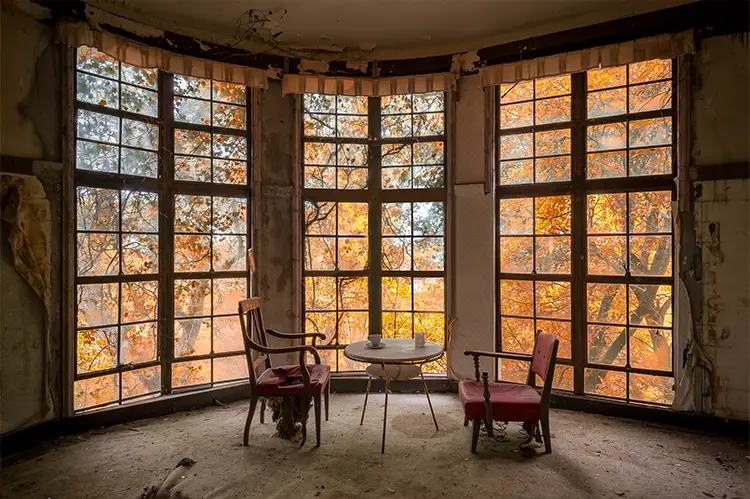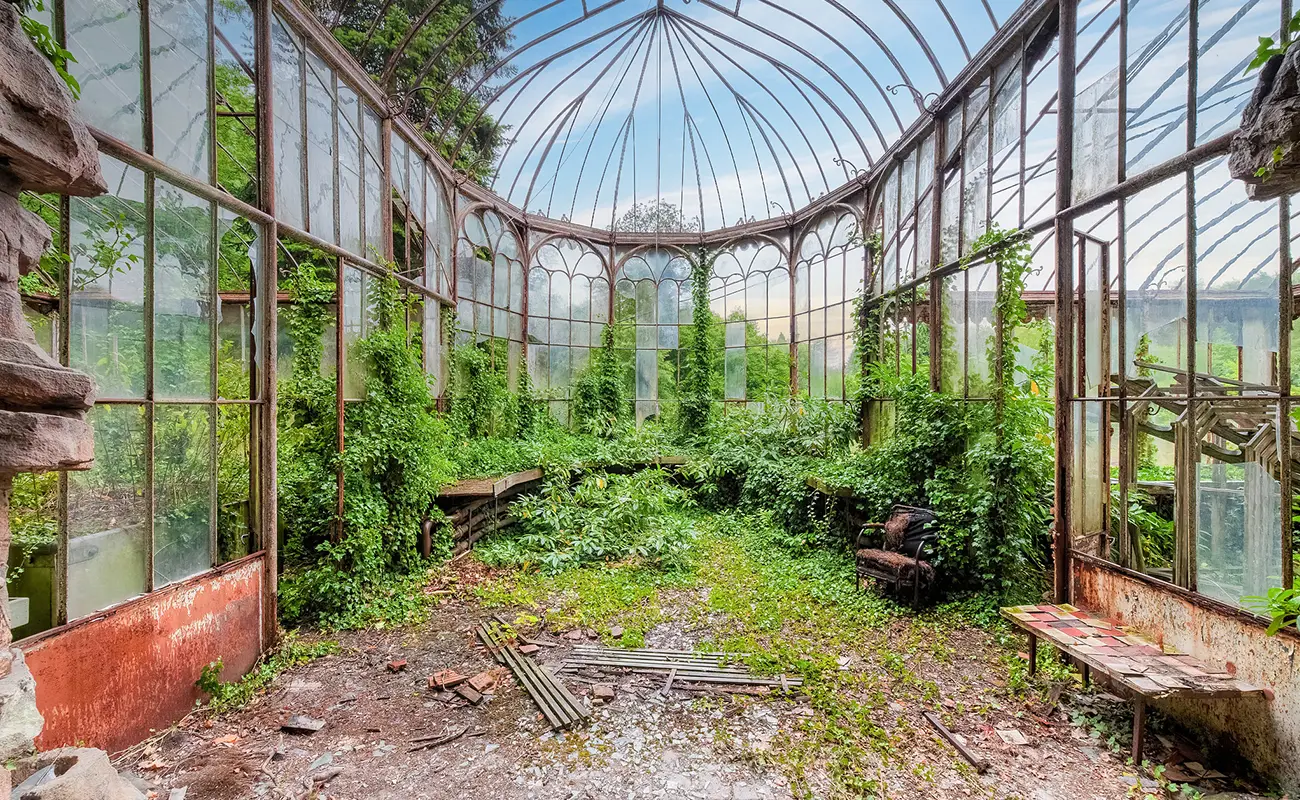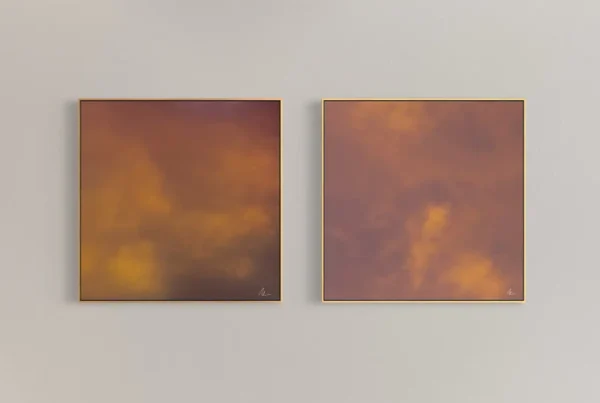“I seek to document the impact of time on these buildings and their slow deterioration, until nature returns, always reclaiming its rights.”
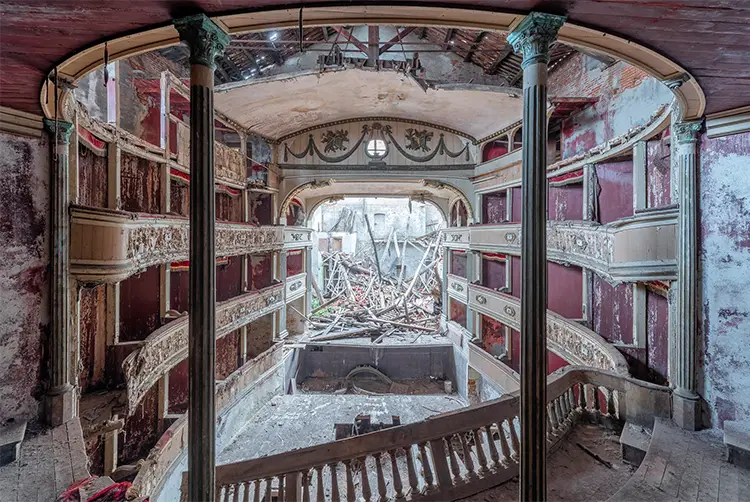
Architecture of Abandonment: A Photographer’s Discovery of Forgotten Time
Francis Meslet’s photographic journey is rooted in a profound intersection of artistic training, digital mastery, and an unyielding curiosity for the overlooked. Educated at the prestigious École des Beaux-Arts in Nancy, Meslet initially pursued a professional path far removed from the deserted locations that now dominate his work. For decades, he honed his creative instincts in the world of advertising as an art director. This extensive background in visual composition sharpened his sensitivity to framing, lighting, and spatial rhythm—skills that would eventually underpin his photographic practice. His reintroduction to photography came unexpectedly in 2005, when a digital camera rekindled his fascination with the medium. While training for the New York marathon, Meslet took a spontaneous detour through the woods near his home and stumbled upon a forsaken sanatorium. This chance encounter would define his artistic direction for years to come.
This first encounter with architectural neglect ignited an enduring pursuit of what he describes as “time capsules”—spaces where the world has moved on but the past lingers. Meslet soon expanded his search to industrial ruins across the Lorraine region, as well as disused sites in Belgium, Luxembourg, and Germany. The scale and silence of these locations captured his imagination, revealing complex narratives etched into collapsing structures. Over time, his expeditions grew in scope, taking him across Europe, Japan, and the United States. In every location, Meslet finds not just architectural decay, but a quiet resistance to disappearance—rooms, hallways, and chapels that speak eloquently without uttering a word. These places, once active with life and now surrendered to time, offer the perfect environment for his lens to excavate unseen stories.
Through this evolving body of work, Meslet has produced five major photographic books, each one chronicling the beauty, fragility, and symbolic weight of abandonment. One book focuses entirely on derelict churches, serving as visual testimony to the rural exodus and diminishing spiritual practice in modern Europe. These projects are not only photographic records but also cultural documents, capturing the architectural remains of disappearing worlds. His approach, rooted in instinct and sharpened by decades of visual training, is both aesthetic and archival. Whether in a European monastery or a forgotten American schoolhouse, his work consistently demonstrates an ability to recognize and frame the quiet tension between ruin and resilience.
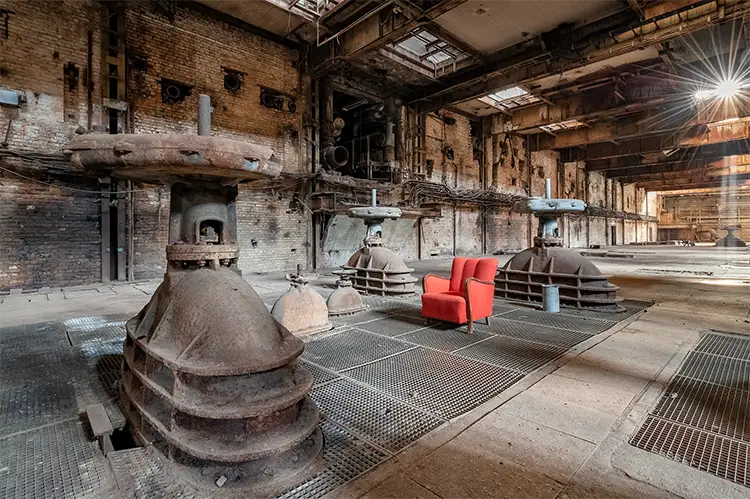
Francis Meslet: From Artistic Margins to the Heart of Urban Exploration
Though Meslet’s identity as a photographer emerged later in life, his creative impulses trace back to childhood. At twelve, he declared his desire to pursue art to a math teacher—an unconventional revelation that was met with rare encouragement rather than dismissal. That moment of belief, coupled with parental support, paved the way for his formal studies at the National Fine Art School in Nancy. There, he absorbed a comprehensive education that combined art history, painting, graphic design, and communication. The program enabled him to experiment widely with mediums before transitioning into the applied arts, where he found early success in industrial design and eventually advertising. Graduating at the top of his class, Meslet’s first professional decade centered on brand identity, visual storytelling, and cultural communication—experiences that would later translate seamlessly into his photographic storytelling.
Though his early creative years were largely screen- and studio-based, Meslet’s reengagement with photography reconnected him to a different kind of visual practice—one rooted in exploration, risk, and observation. His entry into urban exploration, commonly referred to as “urbex,” was driven less by thrill-seeking and more by a deep fascination with how architecture evolves after abandonment. These excursions are not spontaneous; they demand extensive planning, discretion, and sometimes even physical danger. Working with a small team, Meslet ventures into spaces others avoid, capturing moments that would otherwise disappear. Armed with only his camera, tripod, and natural light, he remains committed to producing images that honor the existing atmosphere of each location, without artificial intervention.
The technical precision and conceptual consistency of his work are often compared to the legacy of the Düsseldorf School, particularly Bernd and Hilla Becher, whose methodical documentation of industrial structures resonates with Meslet’s own series. He also draws inspiration from photographers like Raymond Depardon, Eugène Atget, and Bérénice Abbott, all of whom dedicated their lenses to the poetic or sociological aspects of place. Beyond photography, he finds kinship with artists like Hubert Robert and Piranesi, whose renderings of ruins echo the quiet drama of his own imagery. These influences inform not only his aesthetic but also his philosophical approach—one that sees decay not as failure, but as transformation worth witnessing.
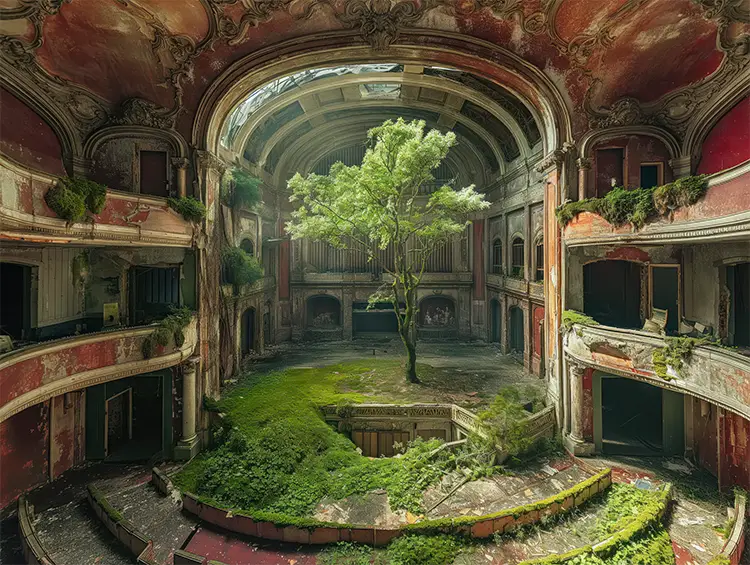
Natural Light, Artificial Intelligence, and the Duality of Practice
Meslet’s artistic process unfolds across two contrasting environments: the unpredictable terrain of abandoned sites and the contemplative quiet of post-production at home. His on-site methodology is grounded in preparation and safety, as many of the structures he enters are structurally unstable or legally inaccessible. Working in tandem with fellow photographers, he emphasizes discretion and caution, often relying on extensive reconnaissance to locate viable sites. Once inside, Meslet adheres to a purist approach—using only available light and a tripod to capture his images. The decision to avoid flash or artificial illumination contributes to the authenticity and mood of his photographs, allowing shadows, color shifts, and natural textures to speak for themselves. This constraint often leads to long exposures and time-intensive shoots, but the results retain an emotional honesty that has become a signature of his style.
In stark contrast, Meslet’s second workspace—a digital studio—is where images are reviewed, edited, and assembled into larger projects. Years of experience with tools like Illustrator and Photoshop, dating back to their earliest versions, have made him exceptionally fluent in digital editing. This fluency enables him to treat the post-photographic phase not as an afterthought, but as an extension of the artistic process. Here, images are cataloged, refined, and eventually curated into books or exhibitions. Although photography now consumes the majority of his creative time, Meslet remains professionally active in the advertising industry, maintaining a dual identity that enhances both disciplines. The strategic rigor of his commercial work continues to inform his artistic instincts, reinforcing a balance between spontaneous exploration and polished output.
In recent years, Meslet has pushed the boundaries of his practice by incorporating artificial intelligence into his creative workflow. In 2024, following a period of illness that confined him to his home, he embarked on an ambitious project to generate a visual book using AI trained on his own photographic archive. Over 25,000 images were produced during this phase, of which only 250 met his standards for inclusion. The result, Urbex: Exploration of an Abandoned World with Artificial Intelligence, showcases AI-generated environments that closely mimic the tone, composition, and thematic weight of his photographic work. While the medium differs, the underlying objective remains the same: to evoke the quiet poetry of forsaken spaces. This foray into AI has not replaced his photographic practice but rather expanded it—adding a new dimension to his meditation on time, architecture, and impermanence.
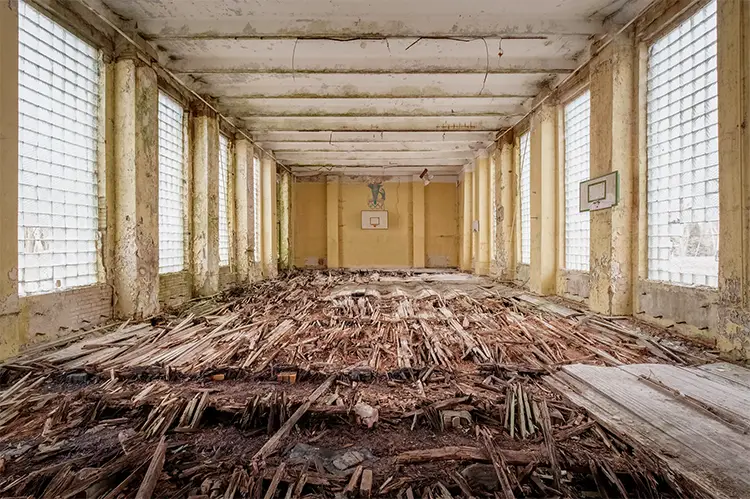
Francis Meslet: The Photograph That Changed Everything
Among the thousands of photographs Meslet has taken, one stands apart for its personal and professional resonance: a single, haunting image titled No Time For Tea, captured in an abandoned Japanese hotel in 2014. This photograph emerged from a trip that combined tourism with urban exploration, offering Meslet a chance to engage with Japan’s unique culture of architectural abandonment, known locally as Haikyo. The journey to the hotel was fraught with obstacles—a violent storm, concealed pathways, and the threat of snakes in a forest littered with broken branches. There was also the looming risk of being apprehended and expelled from Japan, a country that enforces strict trespassing laws. Despite the odds, Meslet managed to slip past the barriers and enter the crumbling structure, where he encountered a tea room suspended in a kind of solemn stasis. He recognized instantly that the space had an extraordinary aura.
Back in France, as he reviewed the digital files from his journey, that initial intuition was confirmed. The image of the tea room captured not just the decay of a forgotten hotel but the persistence of beauty in neglect. Its composition, lighting, and emotional weight distinguished it from other photographs in his archive. This photo would become the centerpiece of his first public exhibition, printed in large format and presented as a statement piece. Its reception was immediate and impactful. A gallery owner, impressed by its evocative power, contacted Meslet with an offer that led to a series of gallery exhibitions. Since then, No Time For Tea has become a fixture in all his shows, marking the moment when his private passion became a recognized public practice.
The significance of No Time For Tea goes beyond its aesthetic achievement; it represents a convergence of all the elements that define Meslet’s work: risk, timing, light, and emotional resonance. The photograph’s journey—from an illegally accessed building in a foreign land to the walls of prestigious galleries—mirrors the arc of Meslet’s own evolution as an artist. It is a testament to his dedication, his eye for the poetic within the discarded, and his ability to transform fleeting encounters into enduring visual narratives. Today, even as he experiments with AI and contemplates future expeditions, the photograph remains a touchstone—a reminder of what his work is ultimately about: capturing moments that the world has forgotten, but that still deserve to be seen.
